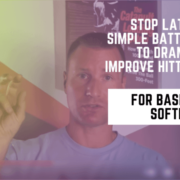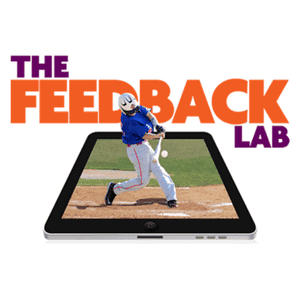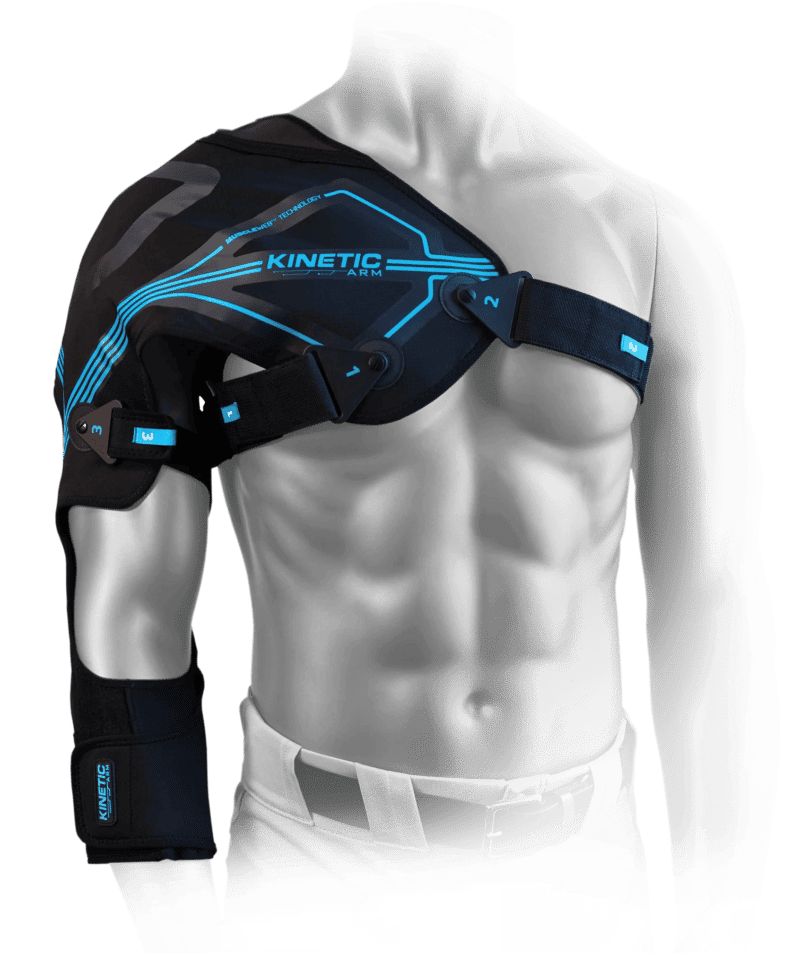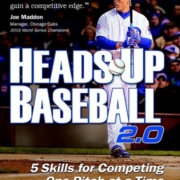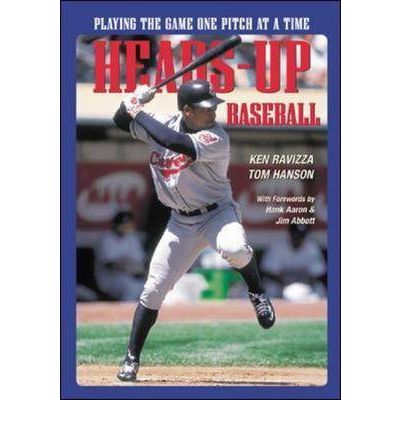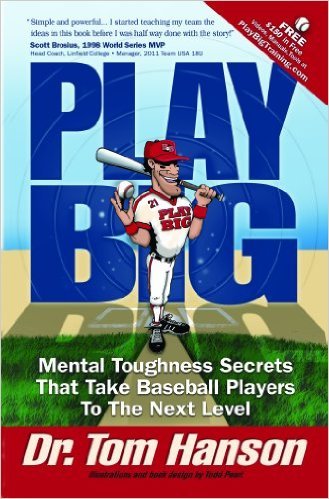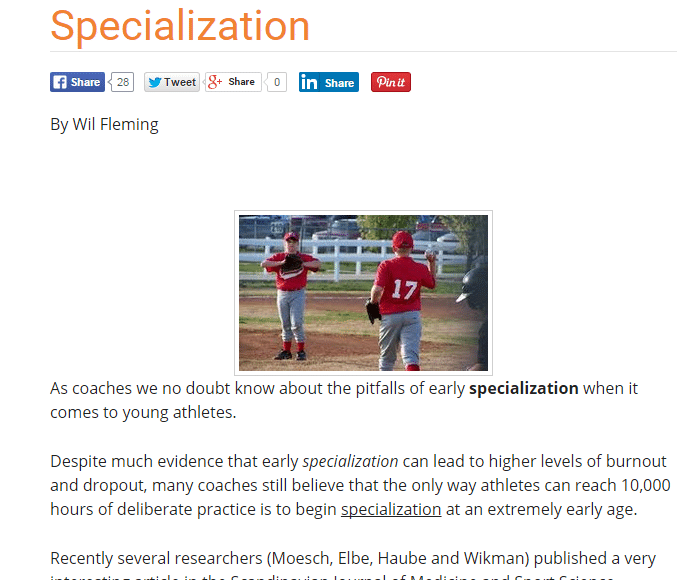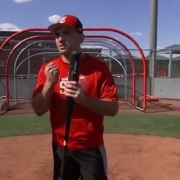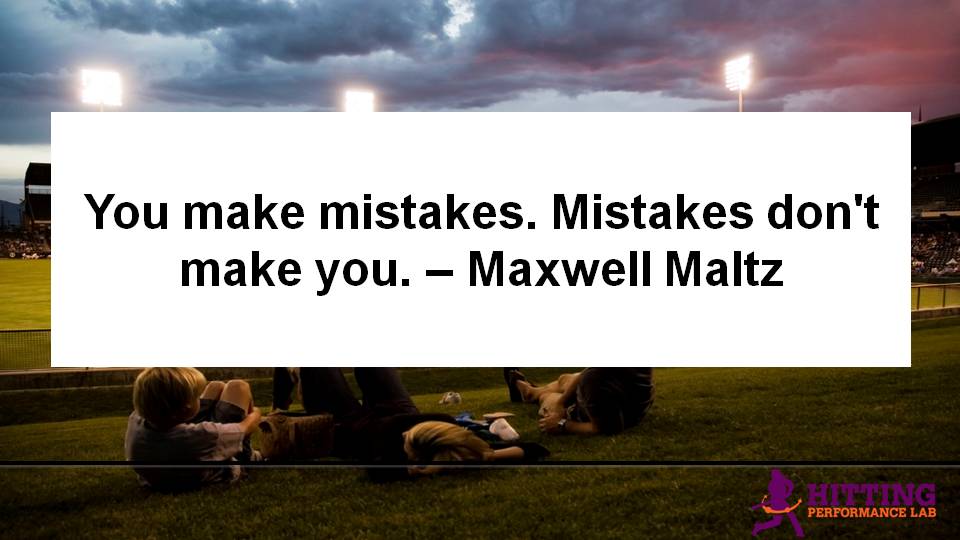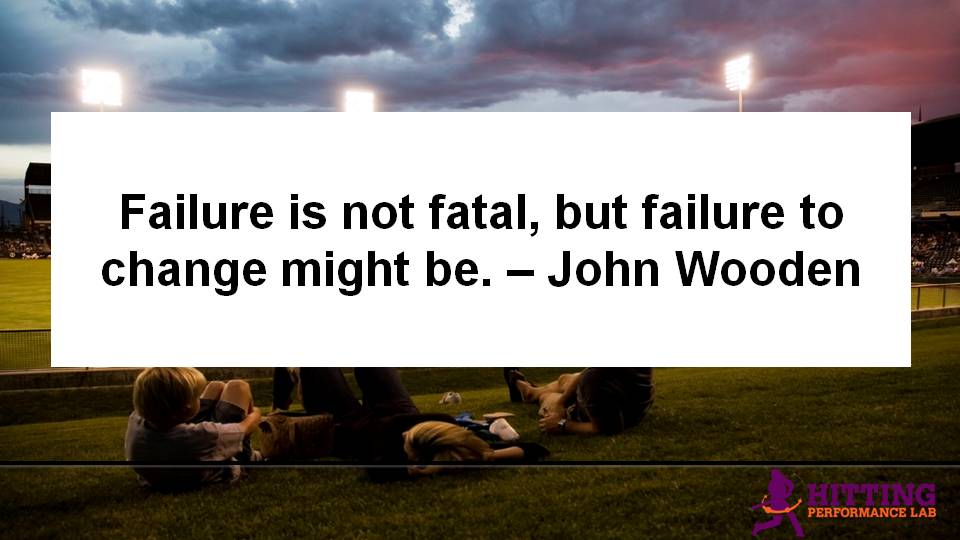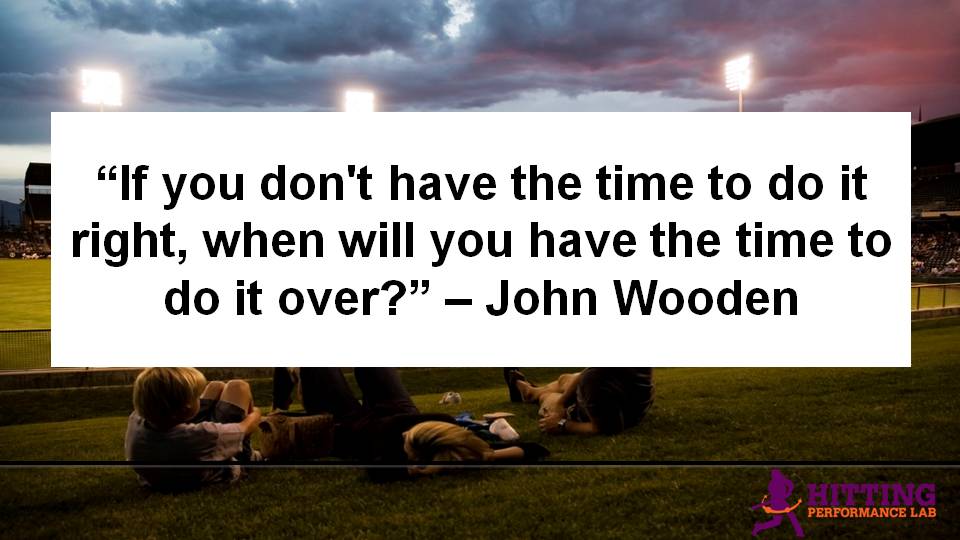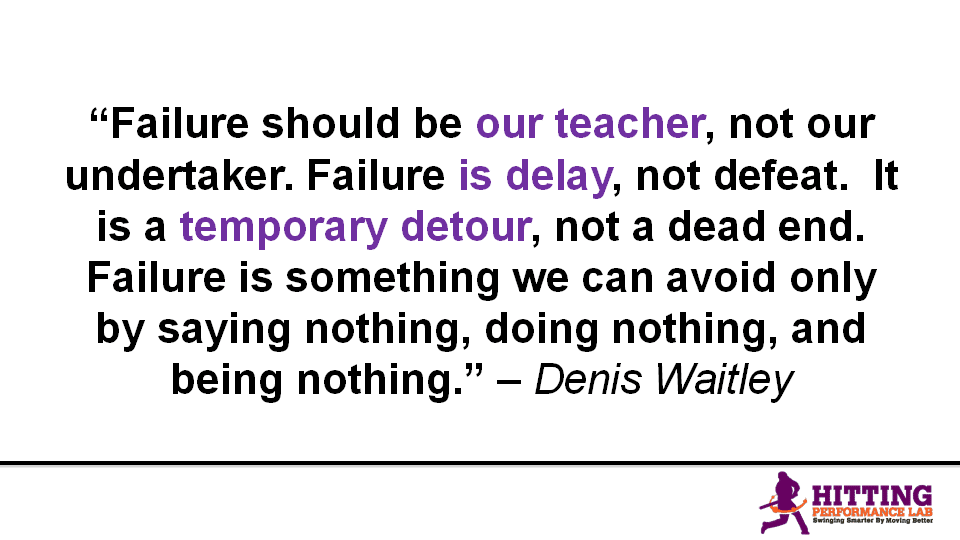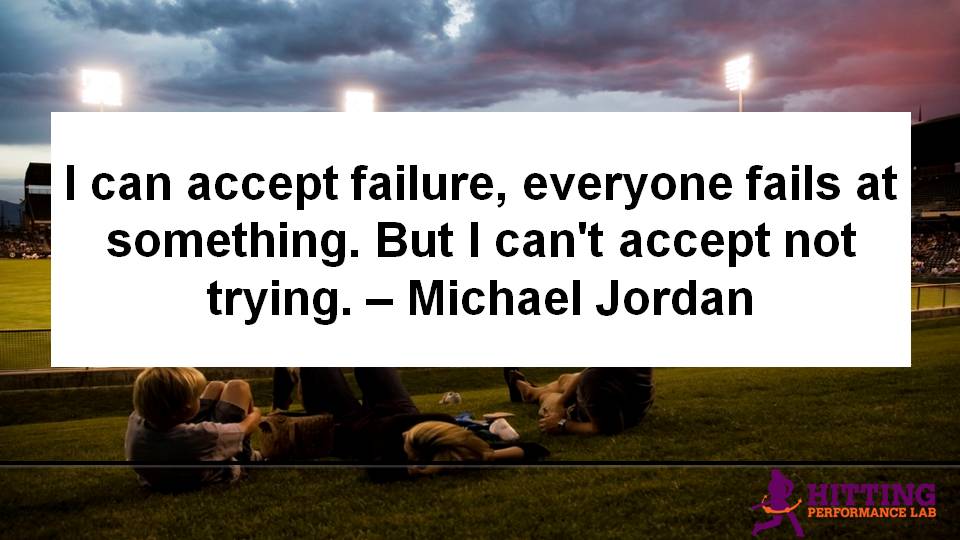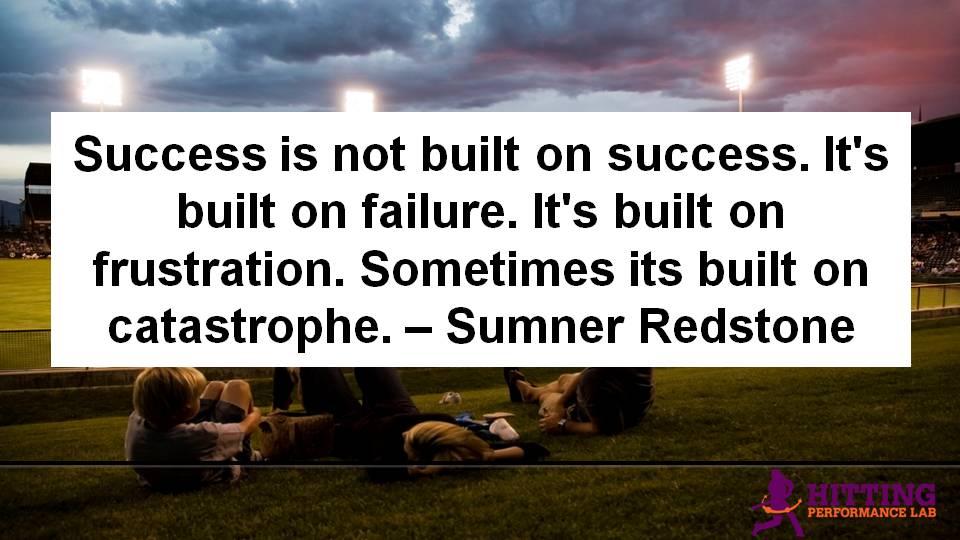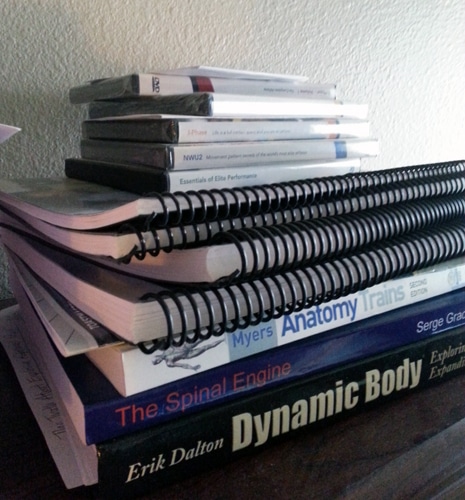Discover if push barrel path hitting drills fix a steep swinging under the ball swing for baseball and softball players…
The Sooner You Know ‘Swinging Down’ Can Be A Disaster The Better
This is bad| https://t.co/dDmbYt1OZt pic.twitter.com/BRld6yav7i
— Sean T. Plouffe ➪ ⚾️ (@airplouffe86) October 2, 2017
The funny thing is…
That was actually ME in the above video! This was a two tee drill video I did a long time ago for my old site SwingSmarter.com (not around anymore), between 2008 and 2010. Like many at the time, I was taught to swing down and through the baseball my whole career. This is where I agree AND disagree with Sean T. Plouffe’s comment to my video….
I agree, swinging down MUST not be a blanket teach, like many were taught in my era. However, I DISAGREE with him because ‘swinging down’ is VERY helpful to pitches middle in and middle up in the zone. And THIS is what guys like Sean DO NOT understand. They’re just as bad as the blanket ‘swing down’ coaches, but they use the opposite blanket teach, ‘swing up’! Click Here for a post I explain in depth why BOTH of these blanket teaches are WRONG.

One of my HS Frosh hitters swinging down at the beginning of one of our first lessons together. We’re using the RopeBat to fix this. Photo courtesy: ME
We’ll discuss:
- ‘That’s what he was taught’,
- The journey that led me away from conventional wisdom, and
- The bottom line… (how to fix)
‘That’s What he was Taught’…
Take this email I recently received from one of my readers, Bryan Nugent:
“Good morning,
My predicament is that over the last year or so I have been working with my son using your style (catapult loading) from your book. My son is like a night and day difference when he doesn’t load like you point out. Some of my cue words I tell him are tuck, hide, see and drive.
- Tuck – for his shoulder
- Hide – his hands
- See – keep his eye on the ball
- Drive – hit through the baseball
Ok, now to the issue his baseball coach is trying to get him to have a different approach, stance and pretty much a different swing all together. From what we have been working on. How would I or what is the best way to approach the Coach and tell him to leave his swing alone in your opinion?”
And here was Bryan’s response after I emailed him a couple questions…
“Thank you for responding to my email. My son is 10. This past Saturday morning before our first pool play game we went back to the cage and got back to doing what we have learned from you. His results were outstanding including a solo shot that the opposing coach told him he hasn’t ever seen a 10 yr old hit the ball that far before.
The coach is young(23) just graduated from a local college where he played baseball. Not knocking him in any way but when talking to him he states ‘that’s what he was taught’ quite a bit. So maybe since this is his first time to coach young boys he is trying too hard, if that makes sense.
I did talk to him a little bit and told him I would bring him your book so he can see where we are coming from. Hopefully he will see there are 2 ways to skin a cat to get the same result. Which is to be able to get the kids to reach there full potential. Thanks again”
Thank you Bryan for sharing and for your continued support. And yes, I asked his permission before sharing with you coaches.
The Journey that Lead Me Away from Conventional Wisdom
I can honestly say that I was where this young coach is when I first started teaching hitters. And I know many of you coaches out there, if you’re being honest with yourself, can relate.
I had stopped seeking knowledge about the swing…stopped reading…stopped asking questions. My mindset was VERY fixed.
Needless to say, I came to the realization that my hitters weren’t getting better. At the time, my local lessons weren’t growing. I was teaching what everyone in my area was teaching. There was zero differentiation. And you know what Mark Twain once said,
“When you find yourself on the side of the majority, it’s time to pause and reflect”.
It wasn’t till about 2011 that I started asking questions, and bought Jaime Cevallos’s book Positional Hitting (who’s a good friend of mine).
Then met Chas Pippitt of Baseball Rebellion, and helped him develop an online presence in 2012.
This was a good start, but there were still A LOT of unanswered questions that I had.
You see, I found a passionate curiosity for corrective human movement science back in 2005. I got educated by gathering a large wicker basket full of alphabet soup certifications. In a short time, I was training athletes and non-athletes by helping them troubleshoot their mobility and stability issues to improve performance or quality of life.
This led me down a rabbit hole that went pretty deep.
When my son was born at the end of 2012, I had an epiphany after reading a couple highly influential resources. I digested the following books over and over, using them to reverse engineer the swing from a human movement principles validated by science perspective:
- Thomas Myers’s book, Anatomy Trains
(no relation by the way),
- Dr. Erik Dalton’s book, Dynamic Body
,
- Dr. Serge Gracovetsky’s book, The Spinal Engine
, and
- Dr. Kelly Starrett’s book, Becoming a Supple Leopard 2nd Edition: The Ultimate Guide to Resolving Pain, Preventing Injury, and Optimizing Athletic Performance
The Bottom Line…
If you’re a young coach – or more seasoned – who still teaches swinging down on the ball, squishing the bug, and that the hips are where the power is at…I know how you can feel married to these because you’ve put a lot of time, effort, and emotion into them while coaching and/or playing.
Believe me, I felt the same way. Looking back now, it was a form of collective wisdom brainwashing that runs rampant in baseball and softball circles.
Here’s what I found teaching young hitters to apply human movement principles that are validated by science to hitting a ball:
- My hitters see and feel productive outcomes within a reasonably short amount of time (huge for getting them to ‘buy into’ the system),
- The online and local lesson part of my business has increased 5-fold (the word is getting out!),
- The coaches that learn this from me are getting the same productive results with their hitters – if not better (and their hitters are raising the eyebrows of other coaches), and
- The best news is, the knuckleheads on social media have a VERY difficult time arguing the true science of the swing!
My recommendation is this:
- Educate yourself like I did with previously mentioned books,
- Question very things you teach by asking, “What don’t I know?”
- Do swing experiments like I do to see if a hitting mechanic is inferior or superior to its counterpart (CLICK HERE for a post on how to do this), And…
- Above-all, be big enough to swallow your pride, regardless of how many years coaching or playing, or if you had the privilege to coach or play at the highest level, and admit you may be wrong. Because let me tell you, many are, so you’re not alone.
Rest assured, if I can change, then so can you.
Believe me, your hitters will THANK YOU. Learning can start when ignorance admits its ignorant. You don’t know what you don’t know, right? Well, now you do 😉



